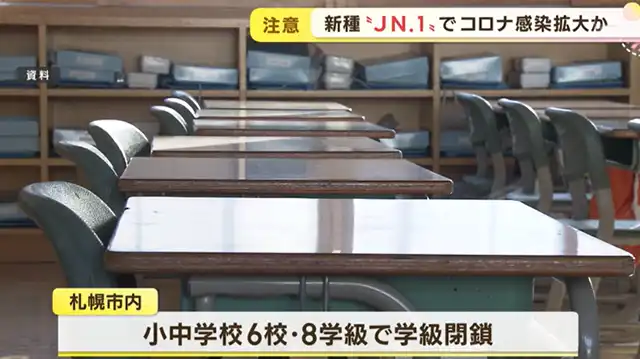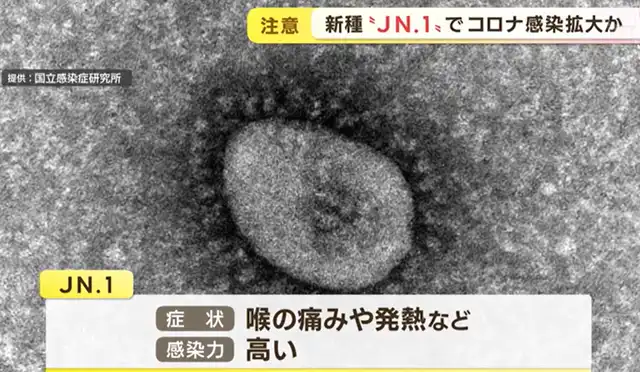Japan: COVID-19 JN.1 Infections Caused Class Closures in Hokkaido
- Normal Liver Cells Found to Promote Cancer Metastasis to the Liver
- Nearly 80% Complete Remission: Breakthrough in ADC Anti-Tumor Treatment
- Vaccination Against Common Diseases May Prevent Dementia!
- New Alzheimer’s Disease (AD) Diagnosis and Staging Criteria
- Breakthrough in Alzheimer’s Disease: New Nasal Spray Halts Cognitive Decline by Targeting Toxic Protein
- Can the Tap Water at the Paris Olympics be Drunk Directly?
Japan: COVID-19 JN.1 Infections Caused Class Closures in Hokkaido
- Should China be held legally responsible for the US’s $18 trillion COVID losses?
- CT Radiation Exposure Linked to Blood Cancer in Children and Adolescents
- FDA has mandated a top-level black box warning for all marketed CAR-T therapies
- Can people with high blood pressure eat peanuts?
- What is the difference between dopamine and dobutamine?
- How long can the patient live after heart stent surgery?
Japan: COVID-19 JN.1 Infections Caused Class Closures in Hokkaido
Entering the 10th wave of the novel coronavirus, the impact of a new variant, “JN.1,” has led to an increase in infections, with class closures becoming common in Hokkaido.
Last week, among 23 people tested for the novel coronavirus at this clinic, approximately 60%, or 14 individuals, tested positive.
Dr. Akiko Fujimoto, Director of Toyohira Park Internal Medicine Clinic:
“Since around the second week of December, it seemed like the number of COVID cases wasn’t increasing, but it has become evident in January that the cases are indeed rising.”
There is a rising trend in COVID-19 infections. According to the summary for Hokkaido, the number of infected individuals per medical institution is 10.78. This is an increase of 0.25 from the previous week. As of January 31, six schools and eight classes in elementary and middle schools in Sapporo have closed due to infections, leading to an increase in infections among children.

Dr. Akiko Fujimoto said,”What I want to emphasize the most is that even if you feel a bit off, have a sore throat, or no fever, there are people who test positive. So, please wear a mask during such times.”
The background to this increase is the new variant of the Omicron strain, “JN.1.” Although the symptoms, such as sore throat and fever, remain the same as before, it is said to have a high infectivity.
Prof. Yoko Tsukamoto, Hokkaido Medical University, said,”When looking at data from countries where JN.1 has already become dominant, there are no reports of an increase in hospitalizations or severe cases. So, I think there is no need to worry about that.”
Even after transitioning to category 5, the new coronavirus remains a concern. We asked about measures that can be taken in daily life.
Prof. Yoko Tsukamoto said,”Not just for COVID, but I am also quite cautious about keeping the inside of my house from drying out using a humidifier. Ventilation is important, so don’t forget to do that.”

Surge in COVID-19 Cases Raises Concerns, Influenza Numbers on the Rise Too – Is February the Peak for the New Coronavirus?
As of December 2023, the number of COVID-19 cases, initially not significantly high, has seen a rapid increase in January. To understand the reasons behind this surge and the characteristics of the prevailing virus, we spoke with Professor Atsuro Hamada from the Tokyo Medical University Hospital’s Traveler Medical Center. (Interviewer: Masaki Tonegawa)
Could you provide insights into the current situation of COVID-19 infections?
Around late November, the number of infections began to rise, but the number of patients per medical institution was 5.79 in the final week of December. However, as January arrived, the speed of infection spread increased, reaching 12.23 patients in the week of January 15-21.
Why do you think there’s been an increase in COVID-19 cases?
There are two possible reasons. Firstly, the temperature has dropped significantly. Respiratory infections tend to spread as temperatures decrease. The tendency to stay indoors with poor ventilation could be one contributing factor.
The second reason is that the virus has mutated, making it more susceptible to human infection. In December, the prevalent type in Japan was the “EG.5” lineage, but in January, the “JN.1” lineage of the BA2.86 system became more prominent. According to data released by Tokyo on January 25, 55.6% of the samples surveyed were identified as JN.1.
What are the characteristics of JN.1?
EG.5 and JN.1 are said to have a tendency to evade immunity acquired through infection or vaccination. Additionally, JN.1 is considered to have slightly stronger infectivity compared to EG.5.
Does infection with JN.1 lead to severe cases?
So far, there have been no reports of an increase in severe cases. Influenza, with high fever, appears to have more severe symptoms.
Concerns also rise for Influenza B: There are also concerns about influenza infections.
After initially decreasing from 33.72 patients per medical institution in early December 2023, influenza cases started rising again with 17.72 patients in the week of January 15-21. This increase is attributed to the impact of infections from A (H3N2), known as “A/Hong Kong type,” as well as A (H1N1), which caused a pandemic in 2009, and cases of B-type influenza.
With the end of the winter break and the resumption of classes, such circumstances may contribute to a continued increase in infections in the future.
Japan: COVID-19 JN.1 Infections Caused Class Closures in Hokkaido
References:
https://news.yahoo.co.jp/articles/c0754b805a0a418af99634936b6ca1fac18b7b65
https://news.yahoo.co.jp/articles/a151b39ef86b50e12449ba18e3ebf7de2e89c6ce
(source:internet, reference only)
Disclaimer of medicaltrend.org
Important Note: The information provided is for informational purposes only and should not be considered as medical advice.



